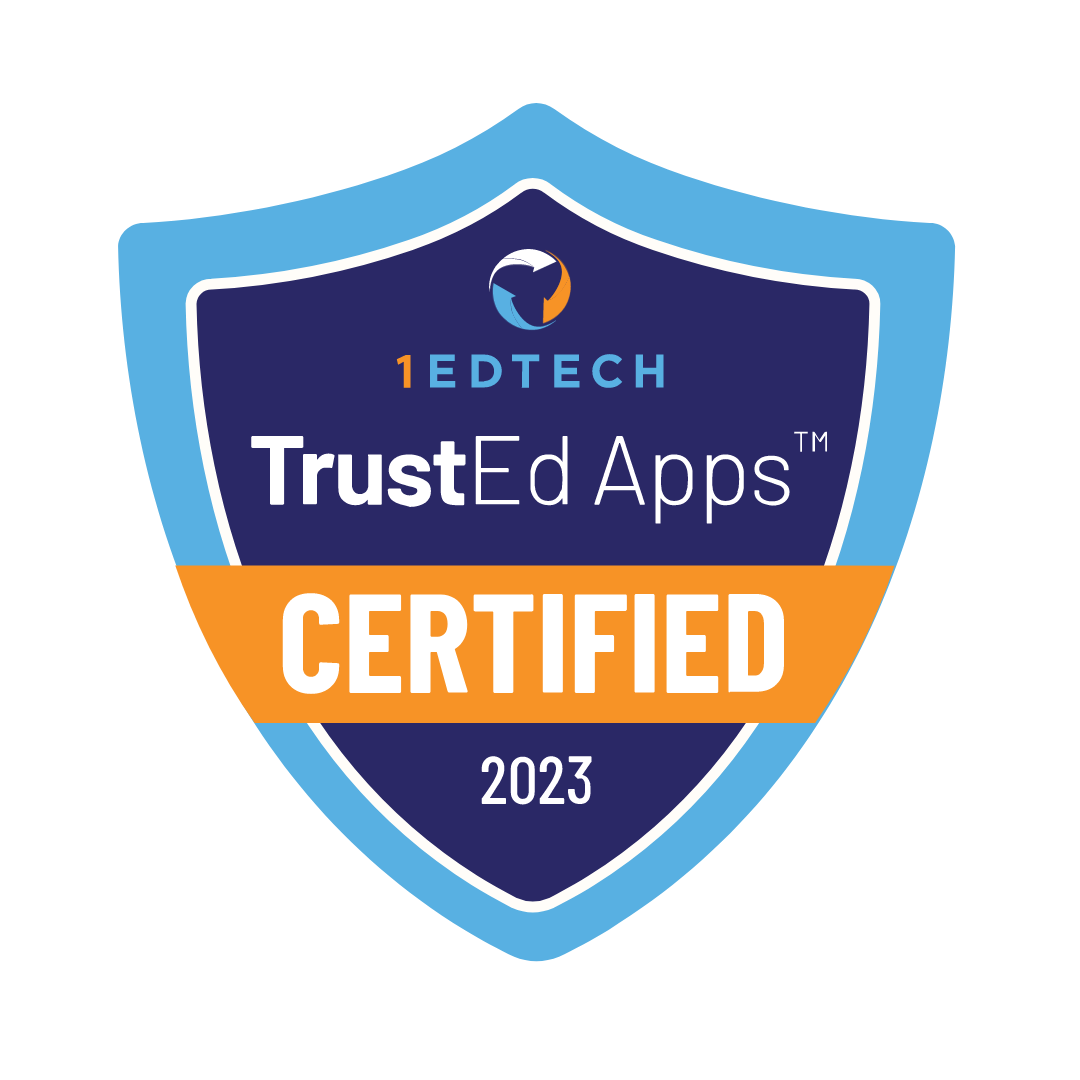Contents
- 1 Преимущества онлайн-преподавания
- 2 Подходы к методике преподавания
- 3 Основные методы онлайнового обучения для K-12
- 3.1 Метод синхронного обучения
- 3.2 Асинхронный метод обучения
- 3.3 Метод перевернутого класса
- 3.4 Метод проектно-ориентированного обучения (PBL)
- 3.5 Метод дифференцированного обучения
- 3.6 Интерактивный контент и метод геймификации
- 3.7 Метод совместного обучения
- 3.8 Метод интеграции социально-эмоционального обучения (SEL)
- 4 Преподавание в К-3
- 5 Методика преподавания для 4-6 классов
- 6 Методика преподавания для 7-9 классов
- 7 Методика преподавания для 10-12 классов
- 8 Внедрение методов онлайнового обучения
- 9 Проблемы и решения в онлайновом обучении
- 10 Заключение
Мир изменился с появлением цифровых технологий. Эти технологии заставили школы и учителей адаптироваться. В онлайн-школах появились новые методы, что привело к разработке стратегий онлайн-обучения. Мы рассмотрим, как учителя используют эти методы, чтобы соответствовать новой цифровой реальности.

Методы онлайн-обучения K-12 – это методы, используемые для обучения учеников от детского сада до 12-го класса с помощью онлайн-платформ. Эти методы включают в себя живые виртуальные занятия, предварительно записанные уроки, интерактивные мероприятия и цифровые оценки. Эти методы направлены на то, чтобы заинтересовать учеников и обеспечить их эффективное обучение в виртуальной среде.
Преимущества онлайн-преподавания
Студенты и родители выбирают онлайн-образование за его преимущества, главным из которых является гибкость. Гибкость позволяет студентам учиться в любом месте и в любое время, что дает им возможность совмещать учебу с подработкой, хобби или семейным отдыхом. О льготах на онлайн-образование мы рассказывали в статье “Раскрытие преимуществ онлайнового образования К-12“.
Подходы к методике преподавания
Методы преподавания в целом делятся на два основных подхода:
- Подход, ориентированный на учителя. Сайт учителя является главным авторитетом, контролирующим поток информации. Среди распространенных методов – лекции, прямое обучение и заучивание. Студенты в основном пассивны, они получают и усваивают знания.
- Подход, ориентированный на студента. Этот подход подчеркивает вовлеченность и самостоятельность студентов. Методы включают групповую работу, обсуждения и решение проблем. Студенты активно участвуют в процессе обучения, развивая критическое мышление и навыки сотрудничества.
Каждый подход эффективен в зависимости от целей и контекста обучения.
Основные методы онлайнового обучения для K-12
Исследование “Сравнение эффективности аудиторного и онлайн обучения: Методы исследования преподавания”
было проведено Анной Я Ни. Основные результаты исследования включают следующую информацию:
Онлайн-зачисление в высшие учебные заведения выросло на 21%. С 2002 года количество студентов, обучающихся в традиционных аудиториях, увеличилось всего на 2%.
Успеваемость студентов одинакова как в онлайне, так и в классе.
Больше студентов провалили онлайн-занятия. Доля неуспевающих составила 10 %. На очных занятиях этот показатель составлял всего 4 %.

Учителя выбирают методы онлайн-обучения в зависимости от своих способностей, предпочтений и потребностей учеников. Вот восемь основных методов онлайн-обучения для образования K-12.
Метод синхронного обучения
Синхронный метод обучения предполагает проведение занятий в реальном времени, когда студенты и преподаватели взаимодействуют в режиме реального времени. Этот метод повторяет традиционные занятия в классе, но в виртуальной среде. Этот метод очень важен для развития общения, активного участия и обратной связи в режиме реального времени. Преподаватели используют такие инструменты, как Zoom, Google Meet, или Microsoft Teams, чтобы облегчить общение.
Асинхронный метод обучения
Асинхронный метод обучения позволяет студентам получать доступ к материалам курса, выполнять задания и участвовать в дискуссиях в своем собственном темпе. Этот метод эффективен для адаптации к различным скоростям обучения и расписаниям студентов. Преподаватели используют такие платформы, как Google Classroom или Moodle, чтобы создать для студентов структурированную среду.
Метод перевернутого класса
Метод «перевернутого класса» предполагает, что студенты изучают новый материал в режиме онлайн, просматривая видео или читая материалы до начала занятий. Время занятий используется для обсуждения, решения проблем и применения знаний. Этот метод способствует активному обучению и более глубокому пониманию учеников. Преподаватели используют такие инструменты, как YouTube или Google Docs, для подачи материала до занятия и облегчения обучения во время урока.
Метод проектно-ориентированного обучения (PBL)
Метод PBL предполагает работу студентов над проектами в течение длительного периода времени. Эти проекты носят междисциплинарный характер и позволяют учащимся применить полученные знания в реальных условиях. Учителя используют такие инструменты, как Trello или Google Workspace, для развития критического мышления, сотрудничества и практического применения знаний.
Метод дифференцированного обучения
Дифференцированное обучение подразумевает адаптацию методов и материалов обучения к различным потребностям учащихся. Это означает предоставление различных ресурсов, заданий или оценок в зависимости от стилистики обучения и интересов. Учителя используют такие приложения, как Padlet (Android) или Seesaw, чтобы помочь ученикам добиться успеха.
Интерактивный контент и метод геймификации
Включение интерактивного контента и геймификации в уроки повышает вовлеченность и мотивацию учащихся. Этот метод включает в себя викторины, симуляции или образовательные игры. Учителя используют такие инструменты, как Kahoot! или Quizizz, чтобы сделать обучение динамичным и приятным.
Метод совместного обучения
Метод коллективного обучения предполагает совместную работу учащихся в группах над выполнением заданий, решением проблем или созданием проектов. Преподаватели используют такие инструменты, как Miro или Slack, чтобы помочь ученикам сотрудничать и учиться друг у друга.
Метод интеграции социально-эмоционального обучения (SEL)
Иногда онлайн-обучение кажется изолированным, поэтому важно использовать метод SEL. Этот метод включает в себя регулярные проверки, создание поддерживающего онлайн-сообщества и обучение студентов саморегуляции. Учителя используют такие приложения, как ClassDojo или Breathe, Think, Do (Android, iOS) с Sesame, чтобы помочь ученикам управлять своими эмоциями.
Преподавание в К-3
Методы преподавания для К-3 направлены на вовлечение молодых учеников в интерактивную, практическую деятельность. Учителя используют такие стратегии:
- Рассказывание историй
- Обучение через игру
- Визуальные инструменты
- Обучение на практике
- Короткие уроки
- Похвала и вознаграждение
Методика преподавания для 4-6 классов
Методы преподавания для учеников 4-6 классов включают в себя ряд стратегий, направленных на вовлечение учеников и поддержку их обучения. Учителя используют такие стратегии:
- Практические занятия и работа в группах
- Решение проблемных задач и дискуссии
- Проектно-ориентированное обучение
- Дифференцированное обучение
- Обучение управлению временем
- Регулярное оценивание
- Похвала, вознаграждение и признание
Методика преподавания для 7-9 классов
Методы преподавания для учащихся 7-9 классов направлены на развитие независимости, критического мышления и сотрудничества. Учителя используют такие стратегии:
- Совместное обучение
- Тематические исследования и дебаты
- Интеграция технологий
- Дифференцированное обучение
- Проектно-ориентированное обучение
- Формативные оценки
- Социально-эмоциональное обучение
- Связь с реальным миром
Методика преподавания для 10-12 классов
Методы преподавания для учащихся 10-12 классов направлены на подготовку к поступлению в колледж, карьере и решению реальных задач. Учителя используют такие стратегии:
- Тематические исследования, исследовательские проекты и дебаты
- Самостоятельное обучение
- Задания
- Проектно-ориентированное обучение
- Интеграция технологий
- Дифференцированное обучение
- Готовность к колледжу и карьере
- Формативные и суммарные оценки
- Совместное обучение
- Применение в реальных условиях
Внедрение методов онлайнового обучения
Исследование “Виртуально неподготовленные: Изучение подготовки онлайн-преподавателей K-12”было проведено Майклом К. Барбуром и его коллегами. Исследование посвящено текущей практике онлайн-обучения в программах подготовки учителей, изучению проблем и возможностей. Ключевые моменты исследования:
- Менее 40 % онлайн-учителей в США сообщили о том, что они прошли профессиональное обучение перед тем, как начать преподавать онлайн.
- Учителям необходимы навыки для создания, преподавания и поддержки онлайн-обучения в школах K-12.

Учителя следуют десяти правилам, чтобы успешно применять методы обучения:
- Понять потребности учащихся.
- Четко определите цели обучения.
- Выберите подходящие инструменты и платформы.
- Опробуйте метод на небольшой группе.
- Предоставьте четкие инструкции и ожидания.
- Проявляйте гибкость и адаптируйте метод по мере необходимости.
- Предлагайте поддержку и обучение студентов использованию новых подходов.
- Контролируйте и собирайте обратную связь.
- Оценивайте и совершенствуйте метод на основе полученных результатов.
- Вводите новые методы постепенно.
Проблемы и решения в онлайновом обучении
В таблице ниже перечислены десять проблем, с которыми сталкиваются преподаватели при онлайн-обучении. Каждая проблема сопровождается решением.
| ГЛАВНАЯ | РЕШЕНИЕ |
|---|---|
| Ограниченная вовлеченность студентов | Используйте интерактивные инструменты, такие как опросы, викторины и комнаты отдыха, чтобы вовлечь студентов в процесс. Включите мультимедийные элементы. К таким элементам относятся видеоролики и интерактивные симуляции |
| Технические трудности | Предоставьте четкие инструкции и техническую поддержку до начала курса. Предложите учебные пособия по использованию онлайн-платформы и устранению типичных проблем. Предусмотрите резервный план на случай технических сбоев |
| Отсутствие личных связей | Укрепляйте отношения с помощью виртуальных коммуникаций, индивидуальной обратной связи и групповых мероприятий. Используйте видеоконференции вместо личных встреч для поддержания личного контакта |
| Тайм-менеджмент для студентов | Помогите студентам развить навыки управления временем. Дайте студентам четкое расписание и установите сроки |
| Оценка успеваемости учащихся | Используйте различные методы оценки, включая контрольные работы, экспертные оценки и участие в дискуссиях. |
| Обеспечение академической добросовестности | Используйте средства обнаружения плагиата и разрабатывайте оценки, требующие критического мышления и индивидуальных ответов. Внедряйте оценки с открытой книгой или проектное обучение, чтобы помочь студентам применить знания. |
| Различные стили обучения и потребности | Внедряйте дифференцированное обучение, предоставляя несколько форматов подачи материала. К таким форматам относятся видео, чтение, интерактивные задания. Предлагайте дополнительную поддержку студентам с особыми потребностями. Такая поддержка включает в себя продление сроков или индивидуальное репетиторство. |
| Изоляция и отсутствие мотивации | Создайте поддерживающее онлайн-сообщество для студентов. Используйте методы геймификации, например, зарабатывайте значки или очки за участие, чтобы помочь студентам повысить мотивацию |
| Поддержание качества курса | Улучшайте содержание курса на основе отзывов студентов и данных об успеваемости. Изучайте новейшие стратегии онлайн-обучения, чтобы повысить эффективность работы студентов. |
| Баланс между работой в сети и вне ее | Дайте четкие указания, сколько времени студенты должны проводить в сети, а сколько – вне ее. Сбалансируйте синхронные и асинхронные задания, чтобы учесть различные графики и темпы обучения студентов.Teachers address these challenges with targeted solutions. Targetes solutions help to create an effective and rewarding online teaching environment. |
Онлайн-школа Legacy имеет сертифицированных преподавателей из разных культурных слоев. Преподаватели онлайн-школы Legacy умеют преодолевать трудности онлайн-образования и помогать студентам добиться успеха.

Заключение
Онлайн-образование требует от преподавателей повышения квалификации и использования новых методов обучения. Мы рассмотрели основные подходы и восемь ключевых методов онлайн-обучения. Мы рассмотрели основные проблемы онлайн-преподавания и способы их решения. Изучение этой информации поможет преподавателям проводить занятия более эффективно.





